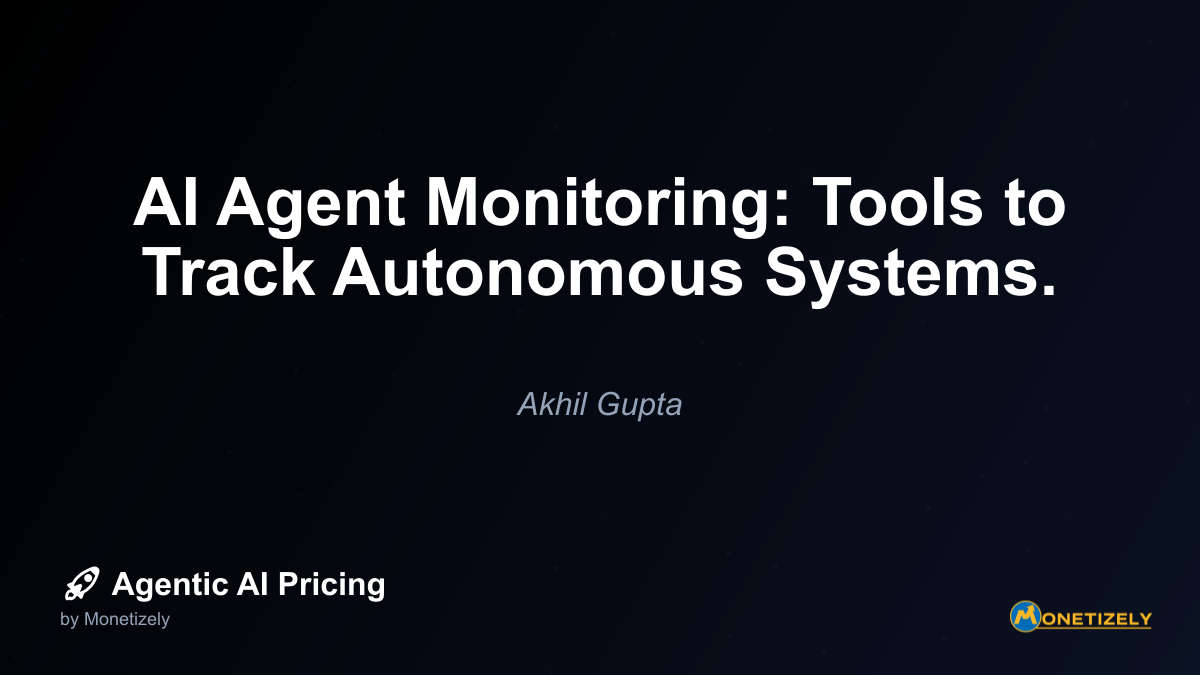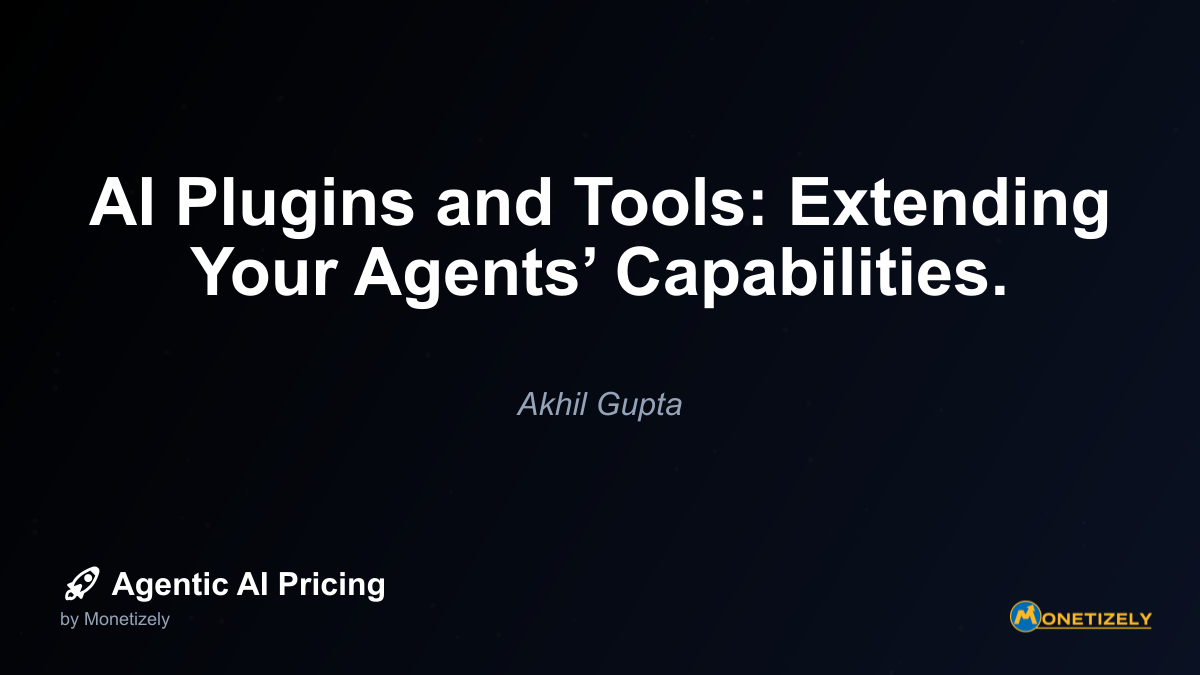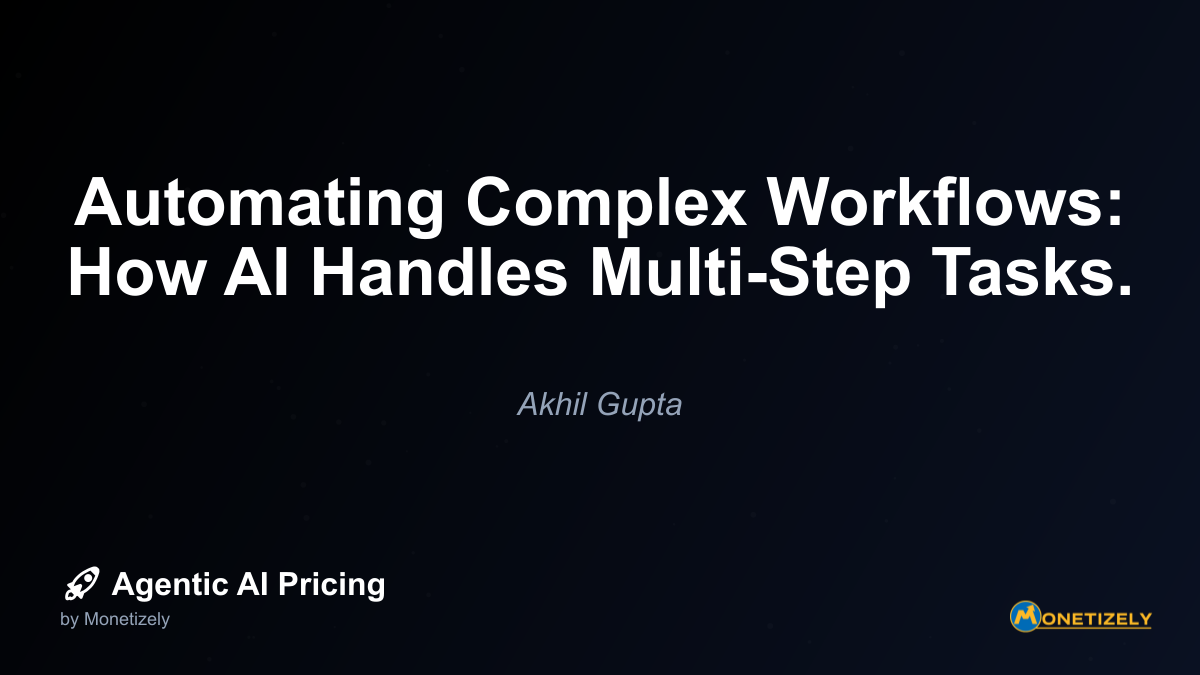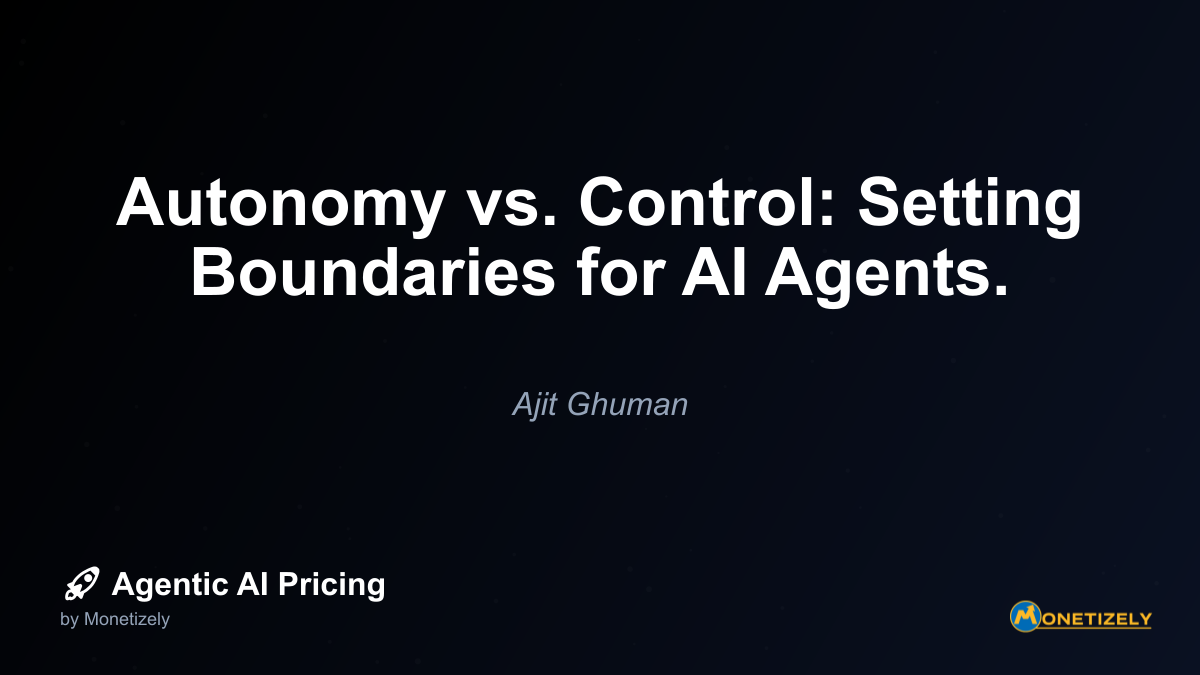· Ajit Ghuman · Technical Insights · 7 min read
Human-in-the-Loop: Combining AI Automation with Human Oversight.
AI and SaaS Pricing Masterclass
Learn the art of strategic pricing directly from industry experts. Our comprehensive course provides frameworks and methodologies for optimizing your pricing strategy in the evolving AI landscape. Earn a professional certification that can be imported directly to your LinkedIn profile.
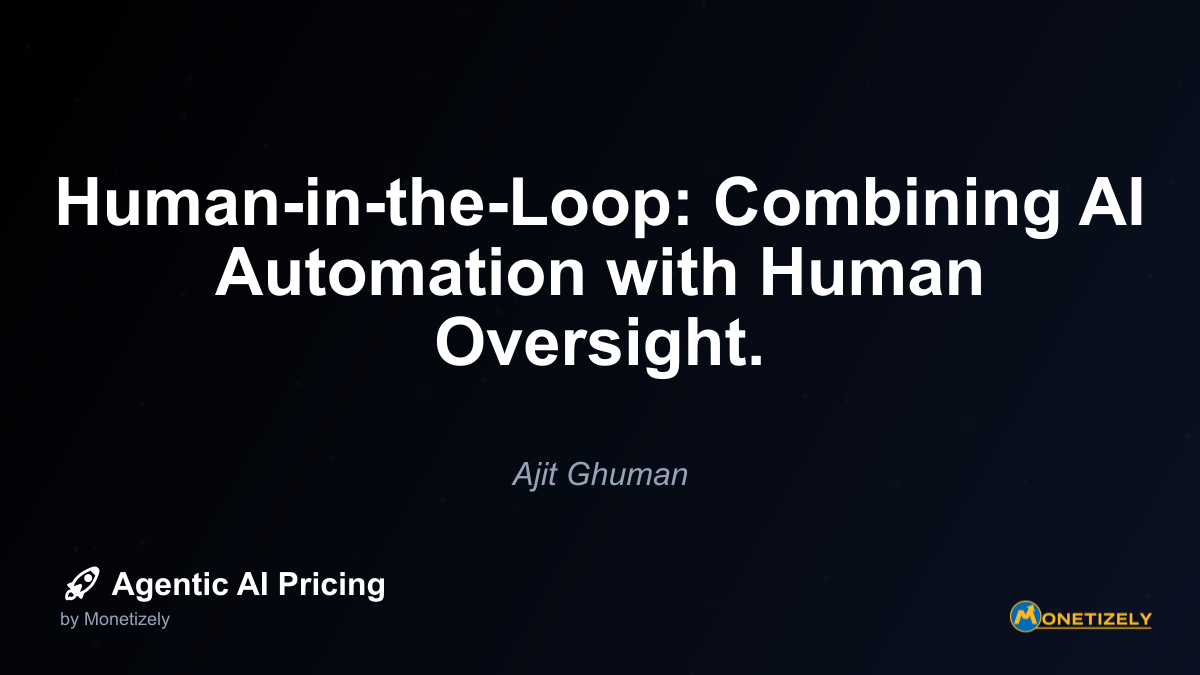
For organizations developing or implementing human-in-the-loop systems, pricing strategy becomes particularly nuanced. The hybrid nature of these solutions requires careful consideration of both AI and human components. Creating effective hybrid human-AI pricing models involves balancing several key factors:
1. Cost Structure Analysis
HITL systems have a distinctive cost structure compared to fully automated solutions:
- AI Infrastructure Costs: Computing resources, model hosting, API calls
- Human Resource Costs: Reviewer time, expertise premiums, training
- Integration Costs: Tools for human-AI collaboration, workflow management
- Scaling Considerations: How costs change as volume increases
Understanding this hybrid cost structure is essential for developing sustainable pricing that accurately reflects your resource investment while remaining competitive.
2. Value-Based Pricing Approaches
Rather than focusing solely on costs, successful HITL pricing often emphasizes the unique value these systems provide:
Quality Premium
HITL systems typically deliver higher accuracy and reliability than fully automated alternatives. This quality differential justifies a premium price point, particularly for applications where errors have significant consequences.
Risk Reduction Value
By mitigating the risk of AI errors or inappropriate actions, HITL systems provide substantial value through risk reduction. This value can be quantified by considering:
- Potential costs of errors if fully automated
- Regulatory compliance benefits
- Reputation protection
- Reduced liability exposure
Time-to-Value Acceleration
While adding human oversight might seem to slow processes, HITL systems often enable faster implementation of AI capabilities by:
- Reducing the need for perfect AI performance before deployment
- Allowing organizations to capture value from “good enough” AI while humans handle edge cases
- Providing a pathway for gradual automation as the AI improves
3. Common Pricing Models for HITL Systems
Several pricing structures have emerged as particularly effective for human-in-the-loop implementations:
Tiered Service Levels
Many providers offer multiple tiers with varying levels of human oversight:
- Basic Tier: Minimal human oversight, typically algorithmic flagging of potential issues
- Standard Tier: Regular human review of a percentage of outputs or decisions
- Premium Tier: Comprehensive human verification of all critical outputs
This approach allows customers to select the appropriate balance of automation, human oversight, and cost for their specific needs.
Hybrid Usage-Based Pricing
This model combines charges for both AI processing and human review time:
- Base rate for AI processing (per transaction, API call, etc.)
- Additional charges when human review is required
- Potential credits or discounts when the AI handles cases without human intervention
This approach aligns pricing with the actual resource utilization while incentivizing improvements in AI performance that reduce the need for human review.
Outcome-Based Pricing
For some applications, pricing based on successful outcomes provides an attractive alternative:
- Charges tied to verified correct outputs
- Shared risk model where payment depends on achieving specified accuracy levels
- Performance bonuses for exceeding quality thresholds
This approach aligns provider and customer incentives around quality and effectiveness rather than just processing volume.
Implementation Challenges and Solutions
While HITL systems offer compelling benefits, they also present unique implementation challenges that must be addressed for successful deployment:
Challenge: Workflow Integration
Effective HITL systems require seamless handoffs between AI and human components. Poor integration creates friction, reduces efficiency, and diminishes the value proposition.
Solution: Purpose-Built Collaboration Tools
Invest in specialized tools designed specifically for human-AI collaboration. These platforms typically provide:
- Clear flagging of cases requiring human attention
- Intuitive interfaces for human review and correction
- Efficient feedback mechanisms
- Performance analytics to identify improvement opportunities
Challenge: Human Resource Management
Managing the human component introduces workforce considerations not present in fully automated systems:
Solution: Specialized Training and Support
Develop comprehensive programs to prepare human reviewers for their role:
- Training on common AI error patterns
- Guidelines for consistent decision-making
- Tools to reduce cognitive load and decision fatigue
- Performance metrics that balance quality and efficiency
Challenge: Scaling Human Oversight
As usage grows, scaling the human component becomes a potential bottleneck.
Solution: Progressive Automation Strategy
Implement a gradual approach to reducing human involvement:
- Begin with comprehensive human review
- Analyze patterns to identify cases the AI handles reliably
- Progressively reduce human oversight for high-confidence scenarios
- Continuously monitor performance to ensure quality maintenance
- Reinvest human resources in more complex or novel situations
This approach maintains quality while gradually improving efficiency as the system matures.
Case Studies: Successful HITL Implementations
Content Moderation at Scale
Challenge: A major social media platform needed to moderate millions of user-generated posts daily, removing harmful content while preserving legitimate expression.
HITL Approach: The company implemented a tiered review system:
- AI classifies content into risk categories
- Low-risk content proceeds without review
- Medium-risk content receives spot checks
- High-risk content requires human review before publication
Results: This approach achieved 99.7% accuracy while reducing human review requirements by 87% compared to their previous process.
Pricing Model: Tiered subscription based on platform size and moderation volume, with additional charges for expedited review of flagged content.
Financial Fraud Detection
Challenge: A payment processor needed to balance fraud prevention with minimal disruption to legitimate transactions.
HITL Approach:
- AI system scores transactions for fraud likelihood
- Transactions below threshold proceed automatically
- Borderline cases receive human review
- System continuously learns from reviewer decisions
Results: Fraud losses decreased by 62% while false positives (legitimate transactions incorrectly flagged) dropped by 43%.
Pricing Model: Base platform fee plus percentage of transaction volume, with performance guarantees for fraud reduction.
Medical Diagnostic Support
Challenge: A healthcare provider sought to improve diagnostic accuracy while maintaining appropriate medical oversight.
HITL Approach:
- AI analyzes medical images and patient data
- System provides preliminary findings to physicians
- Doctors review AI suggestions and make final diagnoses
- AI learns from physician corrections and confirmations
Results: Diagnostic accuracy improved by 31% while reducing physician review time by 22%.
Pricing Model: Hybrid pricing structure with base subscription plus per-case fees, with different rates for AI-only analysis versus combined AI-human diagnosis.
Future Trends in Human-in-the-Loop Systems
As AI capabilities continue to advance, HITL systems will evolve in several important directions:
1. Increasingly Selective Human Involvement
Future systems will become more sophisticated in determining exactly when human input adds value:
- More granular confidence scoring to identify specific aspects needing review
- Personalized routing to match cases with reviewers having relevant expertise
- Dynamic adjustment of human involvement based on real-time performance metrics
2. Augmented Human Decision-Making
Rather than positioning humans as mere reviewers, advanced systems will increasingly augment human capabilities:
- AI-generated explanations of reasoning and recommendations
- Visualization tools to help humans understand complex patterns
- Predictive analytics highlighting potential consequences of different decisions
3. Self-Improving Feedback Loops
Next-generation HITL systems will feature more sophisticated learning mechanisms:
- Automated identification of patterns in human corrections
- Active learning approaches that prioritize ambiguous cases for human review
- Meta-learning systems that improve the efficiency of the human-AI collaboration itself
4. Ethical and Responsible AI Governance
As AI systems take on more consequential roles, HITL implementations will increasingly focus on governance:
- Human oversight specifically targeted at ethical considerations
- Transparent documentation of decision processes
- Audit trails for regulatory compliance
- Bias detection and mitigation workflows
Best Practices for Implementing HITL Systems
For organizations considering or implementing human-in-the-loop approaches, these best practices can help maximize success:
1. Design for Collaboration from the Start
Rather than adding human oversight as an afterthought, design your entire system around effective human-AI collaboration:
- Create intuitive interfaces specifically for human reviewers
- Provide reviewers with the context and information they need
- Establish clear handoff protocols between automated and human processes
- Design feedback mechanisms that capture valuable insights
2. Define Clear Human Decision Authority
Establish explicit guidelines for when and how humans should override AI recommendations:
- Document specific scenarios where human judgment takes precedence
- Create escalation paths for uncertain or high-stakes decisions
- Develop consistent review criteria to ensure fair and unbiased oversight
- Regularly review and update these guidelines based on system performance
3. Monitor Both AI and Human Performance
Comprehensive performance monitoring should encompass both components:
- Track AI accuracy, confidence levels, and error patterns
- Measure human reviewer consistency, speed, and accuracy
- Identify areas where AI or human performance could be improved
- Look for patterns in human corrections to guide AI enhancements
4. Create Continuous Learning Cycles
Establish processes to ensure the system improves over time:
- Regularly incorporate human feedback into AI model updates
- Provide ongoing training for human reviewers based on common issues
- Document and share lessons learned across the organization
- Set improvement targets for both AI accuracy and human efficiency
Conclusion
Human-in-the-loop systems represent a pragmatic, powerful approach to implementing agentic AI in business contexts. By thoughtfully combining AI capabilities with human expertise, organizations can achieve higher accuracy, greater adaptability, and more robust decision-making than either humans or AI could accomplish independently.
The most successful implementations recognize that HITL isn’t merely a transitional state on the path to full automation—it’s often the optimal long-term solution for complex, consequential, or rapidly evolving domains. When human judgment adds genuine value, the hybrid approach delivers superior results.
For pricing professionals, HITL systems present both challenges and opportunities. The complex cost structure and unique value proposition of these systems require sophisticated pricing strategies that accurately reflect their hybrid nature. By carefully considering the balance of automated and human components, organizations can develop pricing models that drive adoption while ensuring sustainable delivery.
As AI capabilities continue to advance, the role of humans in these systems will evolve—but not disappear. The future lies not in choosing between human or artificial intelligence, but in creating systems where each enhances the other’s capabilities, creating solutions greater than the sum of their parts.
Co-Founder & CEO
Ajit is the author of Price To Scale, a top book on SaaS Pricing and is the Founder of Monetizely. Ajit has led and worked in pricing and product marketing at firms like Twilio, Narvar and Medallia. His work has been featured in Forbes and VentureBeat. Ajit regularly consults with software companies from Seed stage to post-IPO on pricing strategy. Ajit is also a highly-rated co-instructor for 'The Art of SaaS Pricing and Monetization' on Maven.
Pricing Strategy Audit
Let our experts analyze your current pricing strategy and identify opportunities for improvement. Our data-driven assessment will help you unlock untapped revenue potential and optimize your AI pricing approach.

